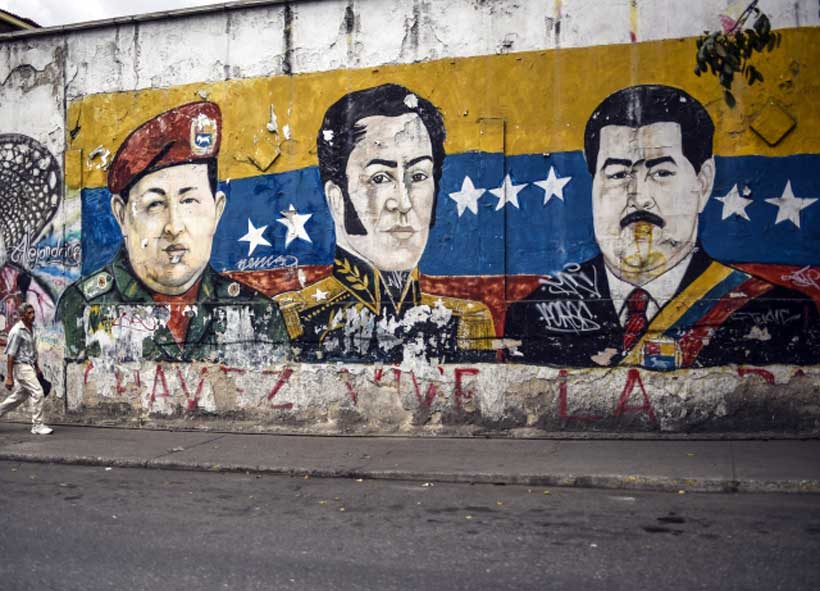When ideas fail, Goethe says, words come in very handy. Words make worlds. However, as Thucydides cautions, in wars, words lose their meaning. We are in the midst of a war of a different kind. Princeton professor David Nirenberg says that “if I have to invest in stocks of anything, it would be in xenophobia. It will only rise.” We are also living in an epoch of ‘politics by labeling.” Genuine political engagement is becoming rare. Many academics and writers often reinforce our certainties and don’t question or enlighten us on our uncertainties.
Today, the festival of ideas has become a new trend. Maybe ideas are so difficult to discuss otherwise. Not in parliament, nor in universities. It is thanks to extreme politicisation that every issue becomes public instantly. If something becomes public, it becomes political.
Far-right populists are significantly more likely to spread fake news on social media than politicians from mainstream or far-left parties. A recent study by Petter Törnberg of the University of Amsterdam, and Juliana Chueri of the Dutch capital’s Free University says that the “radical right populists are using misinformation as a tool to destabilise democracies and gain political advantage.”
The left forces globally are on a losing spree. Only Latin America seems to be bucking the global trend. Half a dozen countries have the new left governments.
Utopia and dystopia are twins. If utopia generates hopes, dystopia creates fears. But as Latin America has demonstrated, dystopian thinking is also social dreaming. Latin Americans teach the world to dream collectively to sharpen our imagination and to dream more, demand more, and ask if the injustices of the world really need to exist.
Some of the best practices in Latin America in the fields of politics, economy, and development discourse have caught the attention of the world. Latin America is a trailblazer in deepening democracy, participatory politics, building a geography of the below, and alternative indigenous cosmologies.
Latin Americans are dreamers. They continue to invent new theories and models and construct alternative utopias. Writers and intellectuals do exhibit a certain utopian impulse. And literature politics here.
Why do Latin Americans continue to repose faith in new left and post-new left politics? This has to be understood in the context of the region being a promising base for theory development. Theory is the net that captures, explains, rationalises and predicts situations. Latin American thinkers have created models, frameworks, mechanisms, and theories that have won worldwide attention and acclaim. No other region has challenged neoliberal policies as Latin America has.
The most important reason why Latin America appeals to the researchers, social activists, and thinkers is the rich tradition of Latin American scholars theorising about development. They have come out with alternative theories of development, growth, technology, and indigenous cosmovision and epistemologies.
Old left
The Cuban Revolution was born from its own soil. Jose Marti, hero of the Cuban independence movement, was the direct precursor of the 1959 Fidelista revolution. As Castro said on May 21, 1959, “Our revolution is neither capitalist nor communist. It is not red, but olive green, the colour of the rebel army that emerged from the heart of Sierra Maestra.” Che Guevara also echoed similar sentiments when he said, “In Cuba the Communist Party did not lead the revolution. It did not properly understand the methods of struggle.It erred in its estimates of the movement’s chances of success.”
Castro’s Cuba pursued its national interests through the application of power politics. Castro practiced strong internationalism. Marxism-Leninism was grafted onto Cuban nationalism. He combined Marx with Marti.
Castro’s internationalism was laced with pragmatism. Even though Cuba depended on the Soviet Union for survival, Castro continued with internationalism. In the 1960s, Moscow practiced ‘peaceful co-existence’ while Cuba exported revolution to Latin America. Even after the disintegration of the Soviet Union, Cuba’s internationalism acquired a new face: medical diplomacy.
The old left, you may call it the first left, revolved around armed guerrilla movements, which peaked in the 1960s and ebbed with Che Guevara’s death.
New left
The second left, often described as the “new left,” is primarily a “movement of resistance.” Some characterize the contemporary period of the new left as “post-new left.”. Some are updated versions of the old Latin American left with a long-term vision; others are populist versions of the left that seek power with short-term goals.
The movement of resistance is a mixed group. While some are primarily “populist, anti-imperialist, anti-US, and anti-neoliberal,” others include “moderate social democrats” and those engaged in the “re-founding of the nation.”
What are the main traits of the new left? Revolution is no longer an objective of the new left. It follows reformist, not insurrectionary, agendas.
Social and reformist agendas have the intended objective of not just seeking immediate improvements in people’s lives but also of building popular political capacity so as to lay the foundation for further advances at subsequent stages of political struggle.
The origin of the Latin American left is distinctly Latin American. It is grounded in Latin America’s long tradition of populism. It is not Castro, but the legacy of Peru’s Victor Raul Haya de la Torre, Colombia’s Jorge Gaitan, Mexico’s Lazaro Cardenas, Brazil’s Getulio Vargas, and Argentina’s Juan Peron that explains the rising tide of the new left in Latin America. Haya de la Torre called for the rejection of both US imperialism and Soviet communism.
What Hugo Chavez called ‘twenty-first century socialism’ had been originally propounded by Peruvian intellectual Jose Maria Mariategui who often talked of ‘Indo-American Socialism’. The indigenous heritage of collectivism, Mariategui argued, would facilitate socialist construction under a revolutionary government.
The left in Brazil and Venezuela and in Chile and Colombia is as different as day and night. Neither the rhetoric of Petro and AMLO nor the worldviews of Zapatistas in Mexico and the Landless Workers’ Movement in Brazil are similar. The new left, or the independent left, is very different from the traditional left.
In pure academic terms, describing Latin America’s transformation as leftist doesn’t pass a rigorous analysis since these governments have not emerged from socialist movements. The Latin American left is not a Marxist left. It is not really a socialist left even though the protagonists use the language of socialism. Lula’s Workers Party is mainly made up of leftists, including Marxists, but they do not exercise hegemonic control over the government.
No left-wing government in Latin America can be described as a practitioner of “classical Marxism” as it is understood as a school, a worldview, a weapon, and a doctrine for explaining the world. The spirit of the current Latin American left remains essentially Mariateguiano.
Mariátegui was the prototype for a new Latin American revolutionary. Latin American Marxism—a catchall that includes heterodox currents like liberation theology, dependency theory, critical pedagogy, and others—dates back to the late 1920s, in what were the final years of Mariátegui’s short life. It was then, with one ear to local indigenous rebellions, student movements, and labor unrest, and the other attuned to social revolution in Europe, the Peruvian struck on one of his most important ideas: that though Marxism was of European origin, it could at the same time be a universal theory of emancipation. He called it “Indo-American socialism.”
The strategies, vocabularies, and jargons of the new left and post-new left have changed. The terms in which they express their politics—the people, liberation, alliances—seem like a throwback to an earlier era. Today, you have “the Twitter Left” and the “social justice blogging community.”
There is a conscious effort to use new rhetoric and jargon. While the new left used terms like oppression, exploitation, solidarity, and liberation, the post-left increasingly uses terms like privilege, classism, positionality, and safe space. That is not to say that the old vocabulary has been abandoned. Some of the new phrases are tactical readjustments. There is also a shift in priority from the ultimate victory to challenging everyday impacts of capitalism, racialization and gender.
Even though there are considerable ideological and programmatic variations among different leftist regimes, their emphasis is on reforming the constitutional order and social pact. Their emphasis is on collective rights and solidarity, deepening democracy, and strengthening universal social citizenship. These regimes have made notable advances towards a redistribution of wealth.
The Zapatistas in Mexico became the lighthouse that illuminated the left in a dark decade. Marcos face became a symbol of the possibility of another world. What Zapatistas offer is still very valuable for the left. They don’t reject democracy; they accept the notion of democracy but redefine it from the local indigenous practice and cosmology. As they say, “we are all equals because we are all different.” It is a decolonial redefinition of democracy from the practices, cosmology, and epistemology of the subaltern.
What the Zapatistas call ‘socialisation of power’ extends to all spheres of social existence—schools, hospitals, communities, and enterprises. This is the process of empowerment from below, the pyramid from below.
The Piquetero movement in Argentina has united impoverished unemployed workers in an effort to secure a sustainable livelihood. The movement has established itself as a powerful instrument for mobilization and change. It gave the poor and indigent people greater visibility and voice on Argentina’s political and social stage.
Colombian president Gustavo Petro and Gabriel Boric of Chile are leaders who are different from their predecessors who arrived during the ‘pink wave’ of the 2000s. Lula was never a communist. He never had any ties to the Communist Party. Over the years, his position has become increasingly centrist.
In Chile and Brazil, the left has advanced a progressive civil rights agenda. In Mexico, AMLO has forcefully defended civil rights against the onslaught of a newly empowered Catholic right. Besides making considerable progress towards distributive justice and their egalitarian agendas, these left leaders have not resisted such self-criticism entirely. Today there is a feminist critique, a robust indigenous movement, and other sources of energy in a political milieu, and their ways of functioning have been profoundly democratic.
The post-left leaders have shown considerable imagination in designing programs of redistribution, investing in public goods, and experimenting in decentralized governance and alternative media.
In both the Zapatista and Andean indigenous movements, the ideal of dignity resonates deeply. The new left has mobilized support among white-collar employees in Argentina and Uruguay, unionized working classes in Brazil, and peasants, small-shop owners, and artisans in Mexico; all of them are represented as noble victims of the treacherous and perverted state, and all are being vindicated by the leaders of the new democratic left.
There is a fraternal breach in the ranks of Latin American post-left leadership. Cuba is facing its worst social crisis. Today, Cuba is hardly seen as a model to follow. Maduro’s Venezuela is isolated even from most of Latin America, including the left-ruled. Lula and Boric condemned Maduro for rigging elections. Boric was most vocal, saying he had “no doubt this election has been stolen.” He further said, “We are dealing with a dictatorship that falsifies elections.”. Lula was instrumental in blocking Venezuela’s entry into BRICS.
The post-new left is consolidating its gains. The left leaders have shown some imagination in designing programs of redistribution, investing in public goods, and experimenting in decentralized governance and alternative media. These efforts generally succeed, in part because they enter into a field of democratic competition that may be demagogic or populist but is also directed to meeting real popular needs.
Future challenges are formidable. Workers are falling prey to the “theology of prosperity,” which preaches that everyone should become their own boss through running small businesses. The unionization rate is dwindling. The creation of a digital culture has been utilized more effectively by the right and the far right than the left. This has impacted public opinion.
In today’s world, everything that binds and connects is disappearing. The good thing about Latin America is that there are still many battles to win, and there are shared values, symbols, and common narratives that unite people. Latin America hasn’t stopped imagining and dreaming.








